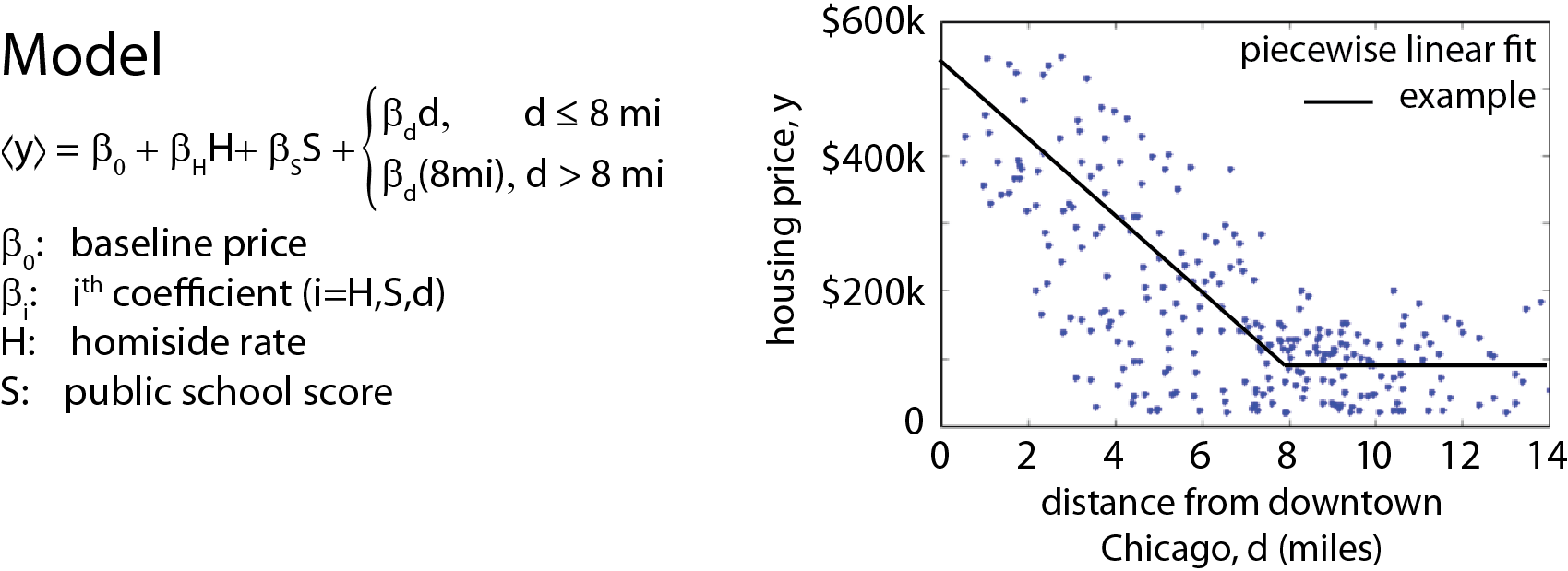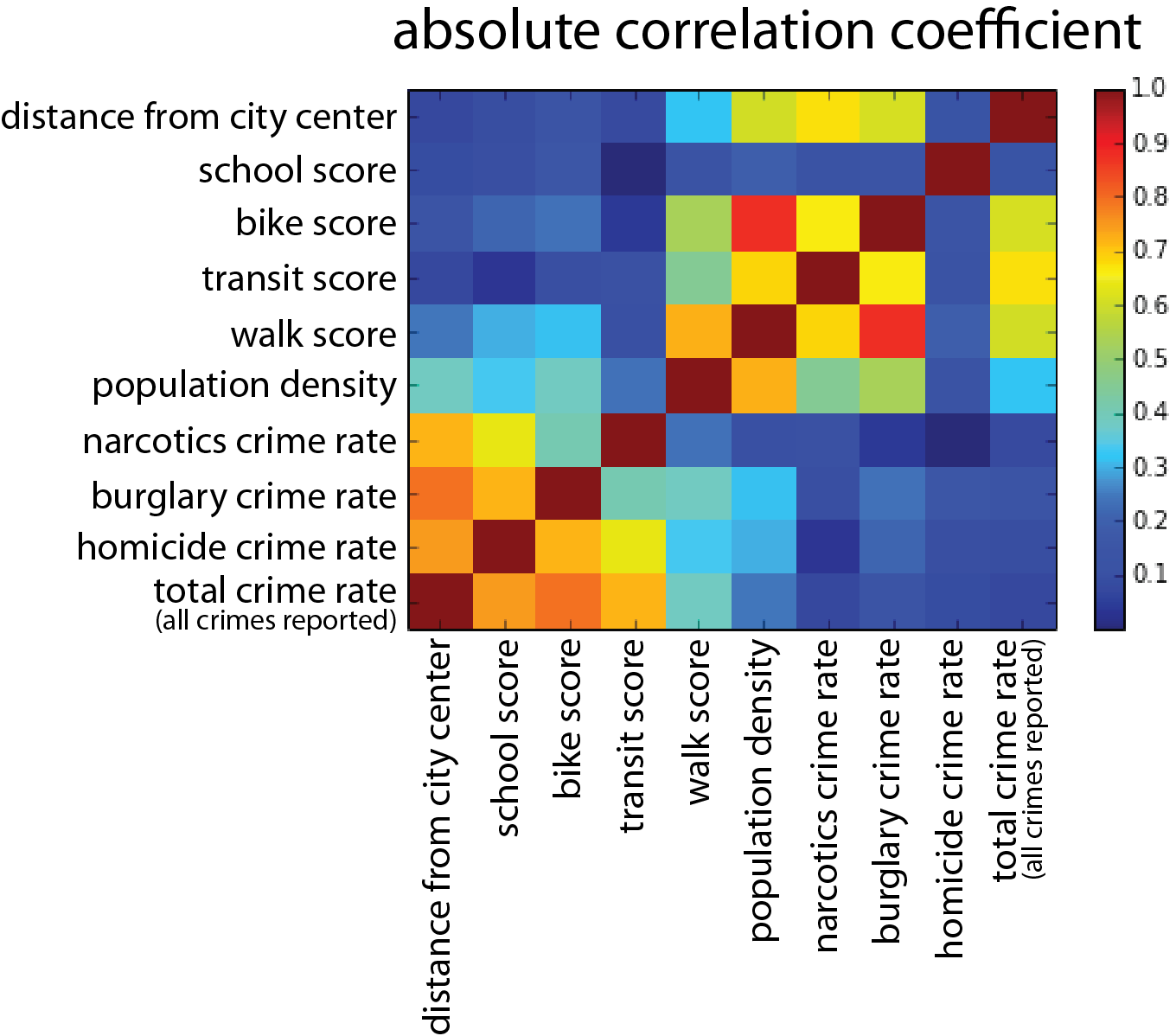Piecewise Linear Least Squares Model
Analysis Summary
- Three features were used to predict housing price (selection methodology below).
- Homicide Rate
- Public School Report Card
- Distance From Chicago Center
- Linear and Lasso Regression on the entire dataset and a filtered dataset were initially used to train a housing price engine, although a Piecewise Linear Regression Model (figure right) was ultimated used instead
- Each data point cooresponds to one grid point
- Goodness of fits for models with a quadradic loss function are shown below
- Bootstrapping was used to calculate coefficients and their standard deviations
- To calculate the value added of improving crime locally (shown by clicking on grids in the data map), housing prices in each grid were compared to the predicted price in the grid if homicide rate were at the city-wide average
Below is a scatter plot showing apartment/condo prices
plotted against distance from the city center

